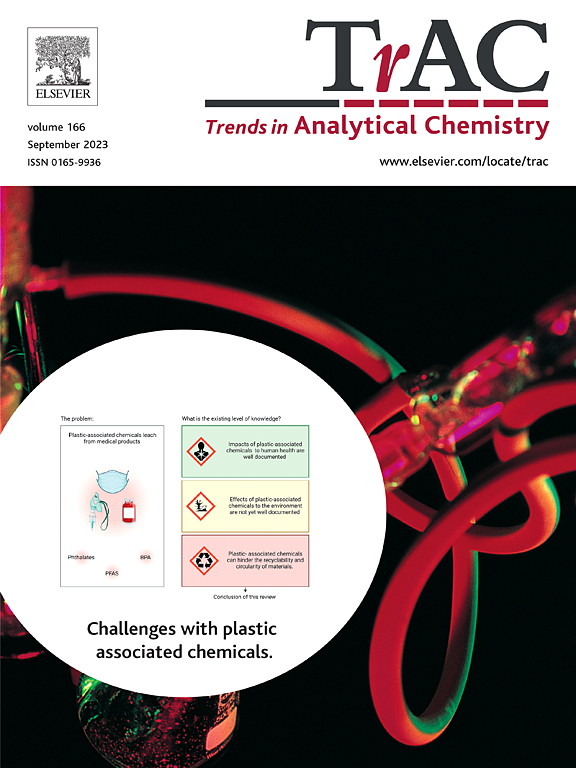Application of isotope ratio mass spectrometry (IRMS) in the geographical determination of selected herbs: A review
IF 11.8
1区 化学
Q1 CHEMISTRY, ANALYTICAL
引用次数: 0
Abstract
Herbs have been consumed for their health benefits for centuries and are still attracting increasingly more attention. Their quality is prone to changes in climatic and geo−chemical conditions. Local cultivation patterns also impact the quality of herbs. Therefore, geographical origin is often regarded as an indicator of quality. However, profit−motivated fraud and adulterations degraded the quality of relevant products, and also destroyed the consumers’ health and trust. Isotope ratio mass spectrometry (IRMS) is particularly useful in verifying the origin of herbs as the isotopic composition of several light elements (C, H, O, N and S) contain information about the geographical locations. Changes in the isotopic composition cannot be identified by other techniques but may be detected using IRMS. In this review, current applications of IRMS in tracing ginseng, saffron, chrysanthemum flos and goji berries were discussed and future development was envisaged.
求助全文
约1分钟内获得全文
求助全文
来源期刊

Trends in Analytical Chemistry
化学-分析化学
CiteScore
20.00
自引率
4.60%
发文量
257
审稿时长
3.4 months
期刊介绍:
TrAC publishes succinct and critical overviews of recent advancements in analytical chemistry, designed to assist analytical chemists and other users of analytical techniques. These reviews offer excellent, up-to-date, and timely coverage of various topics within analytical chemistry. Encompassing areas such as analytical instrumentation, biomedical analysis, biomolecular analysis, biosensors, chemical analysis, chemometrics, clinical chemistry, drug discovery, environmental analysis and monitoring, food analysis, forensic science, laboratory automation, materials science, metabolomics, pesticide-residue analysis, pharmaceutical analysis, proteomics, surface science, and water analysis and monitoring, these critical reviews provide comprehensive insights for practitioners in the field.
 求助内容:
求助内容: 应助结果提醒方式:
应助结果提醒方式:


